The success of a restaurant is not always measured by the quality of the food or the service. The right menu design is also a key element in convincing customers of your dishes and meeting their taste preferences. It has been shown that the location of dishes, their description, their visual appeal and their pricing strategy can determine whether a guest orders a more expensive or another portion or decides to try other snacks. When creating a restaurant menu, understanding this is helpful for your culinary success.
Placement and organization of dishes on the menu
Menu design should be about enticing, informing and enticing
Michael Hart
designerDesigning a restaurant menu is not just a matter of selecting items and presenting them uniformly on paper. It is a well thought out strategy aimed at making a good first impression on customers and encouraging them to order. The location and the way the menu is presented can influence how customers perceive the restaurant and its atmosphere. For example, if the design provides for the menu to be served alongside tasty treats or appetizing photos of the dishes, this can increase visitors' interest and their desire to try what they see.
The correct placement of the different food categories on the menu will also help you to attract attention and increase sales. For example, the items with the highest profit margins can be placed at the top to better encourage them to order before they have even looked at all the pages. These also act as a high anchor for the following dishes, which are cheaper and therefore appear more attractive in terms of pricing. In addition, strategically placed "special offers" or "best sellers" and their unique presentation can generate more interest, which increases sales of these dishes. The correct design and organization of a restaurant menu is therefore not only determined by logistical aspects, but also by strategic considerations and marketing objectives. They should be designed to increase profitability and customer satisfaction.
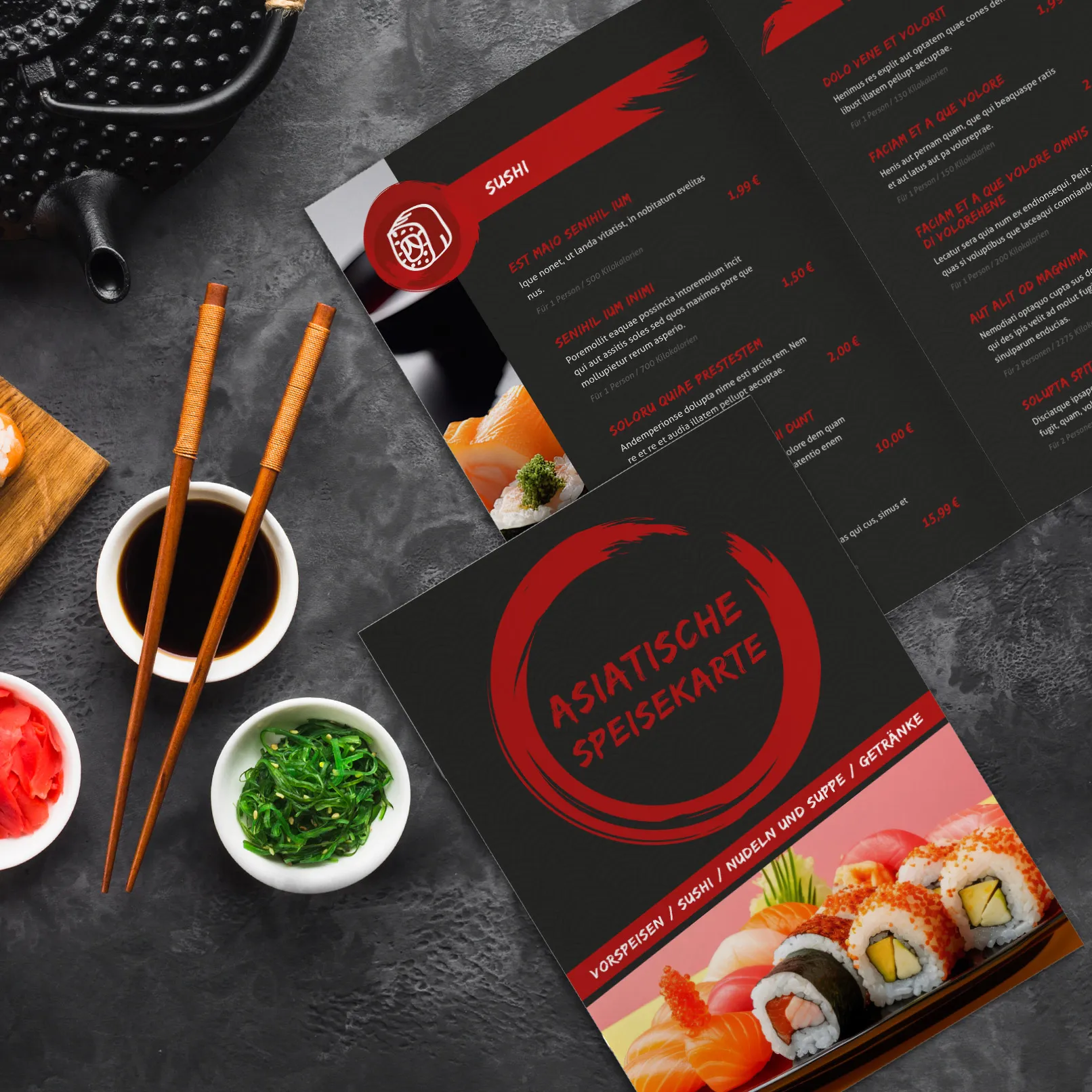
Use high-quality photos in menus
Photos of dishes on menus require high-quality menu printing, but also effectively help to attract attention and increase sales. This is especially true for names of dishes that are not as well known, such as in Asian restaurants. The visual appeal of the dishes plays a crucial role in customers deciding what to order, so high-quality photos are an important part of the design.
First and foremost, the photos of the dishes should be of high quality and appetizing. They should reflect the true look and detailed texture of the dish as well as convey the atmosphere and taste. Professional lighting and editing will help accentuate every element of the dish and make it more appetizing.
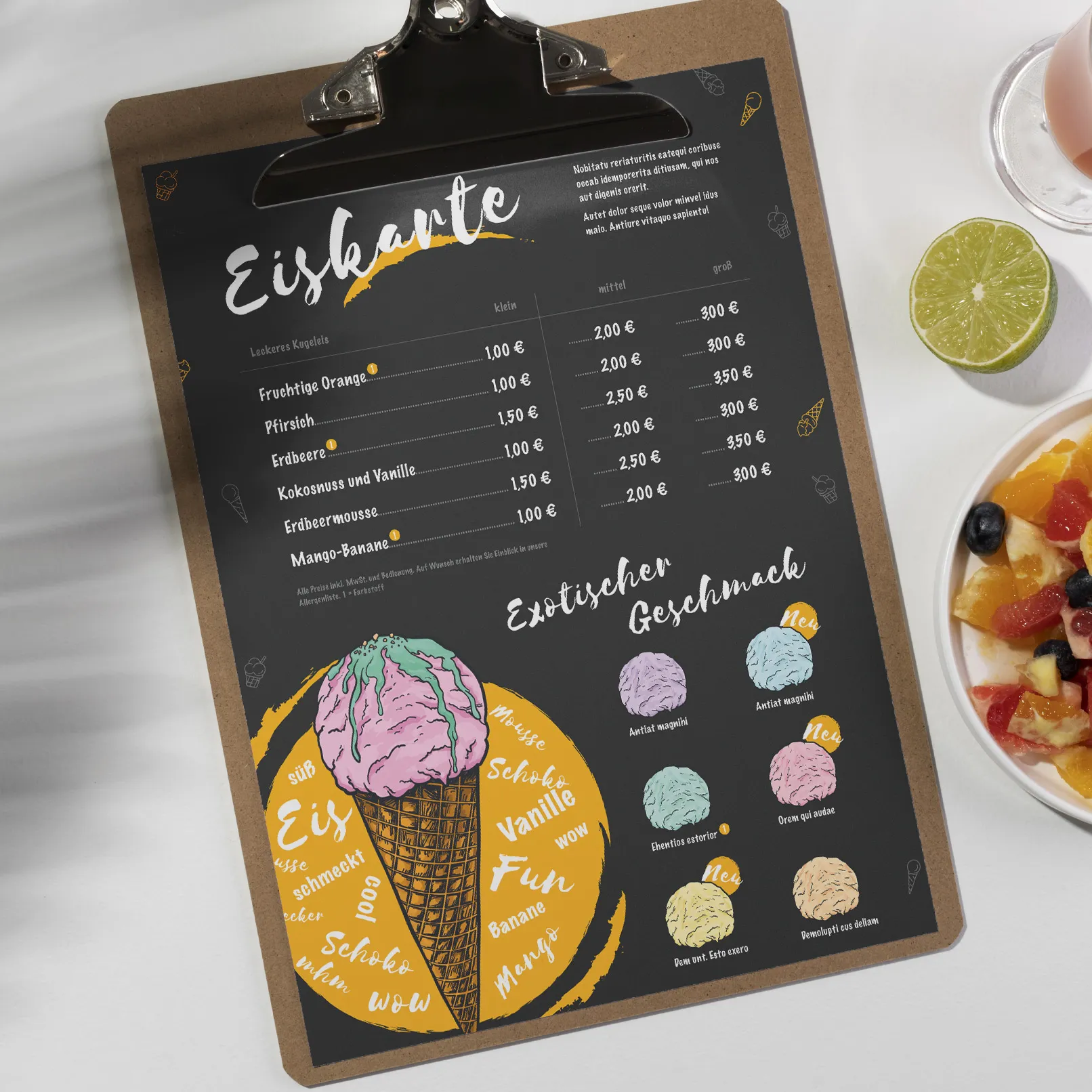
Photo techniques that enhance the effect include, for example, choosing the right angle, using depth of field to emphasize details and composition techniques to create an attractive image of the dish. It is also important to consider the background and additional accessories that can enhance the effect of the photo.
However, you should be aware of the risks and limitations of using images on menus. For example, poor quality or unappetizing photos can put customers off and negatively influence their decision to order. In addition, too many images on a page can confuse and overwhelm readers, making it difficult for them to make a choice.
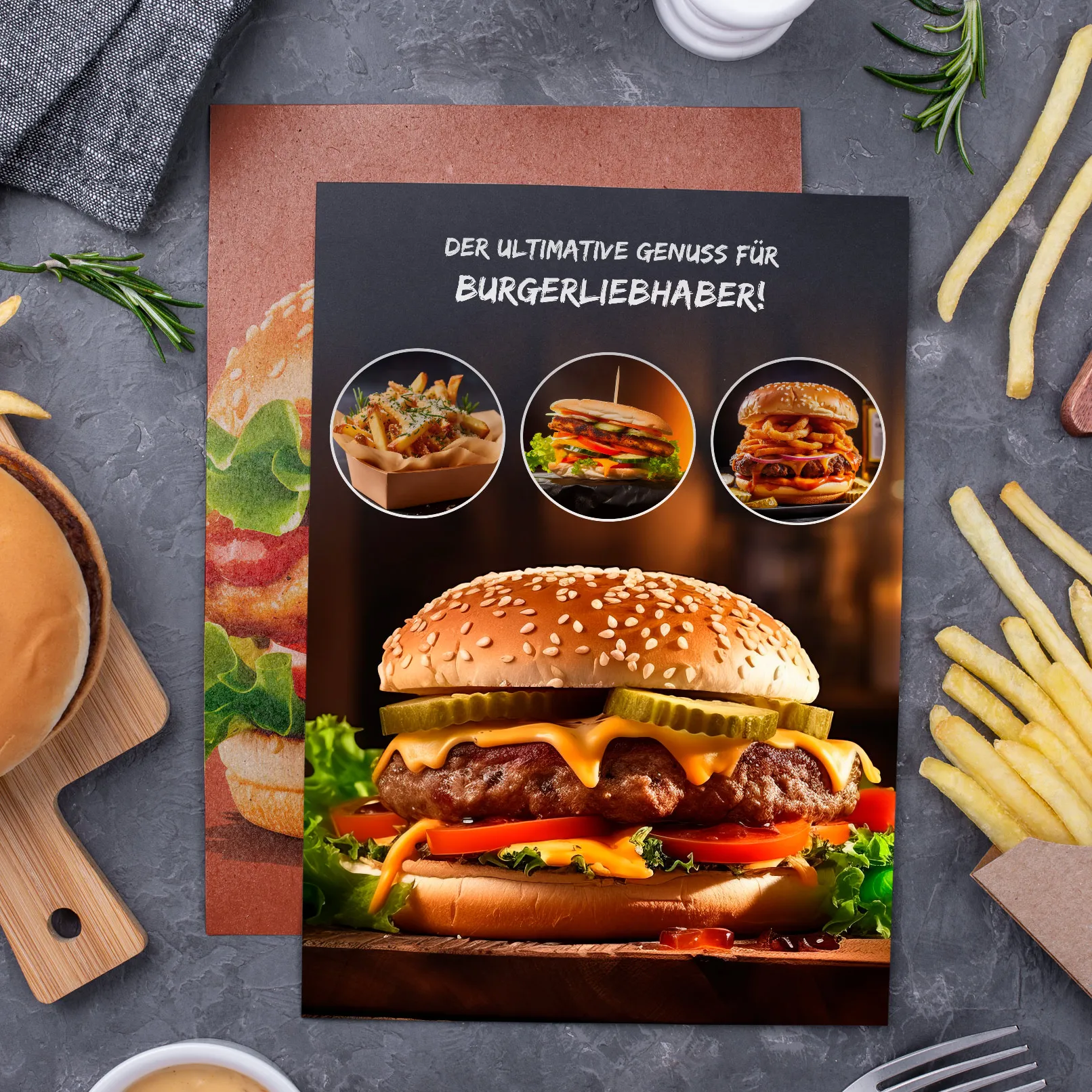
An appropriate description of the dishes on your menu
Descriptive names for dishes can whet the appetite
Charles Spitzer
Marketing ManagerMenu descriptions don't just provide information about the ingredients. They also attract attention and encourage people to order. They should be meaningful and exciting in order to arouse the customer's interest and appetite. Use an interesting and legible font and use colors with high contrast to the background so that the descriptions are easy to read and catch the eye.
Effective writing techniques include using words and phrases that highlight the flavors and specialties of each dish. For example, instead of just "chicken salad", you can write : "Enjoy tender chicken, refreshing vegetables and aromatic herbs in our excellent salad". It is also important to use short but concise descriptions so as not to overwhelm and to maintain readability.
Descriptions fulfill the function of conveying information about the composition and preparation of the dishes. They also create an emotional connection with the customer. By using interesting and unusual designs, they stand out from other menu items, making them more attractive and easier to read.
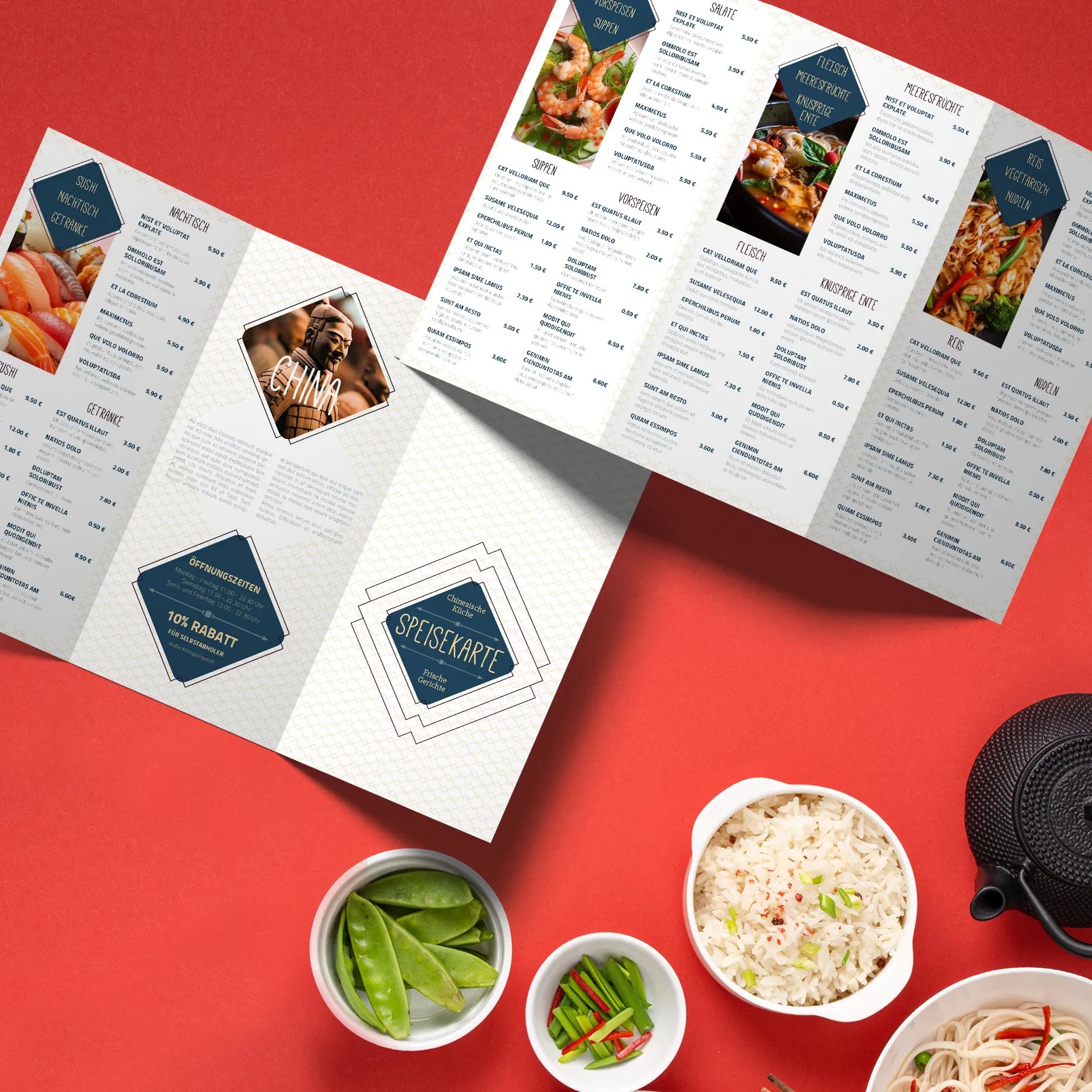
Display prices correctly in the menu template
Italicized prices seem more attractive.
Robert Cialdini
Displaying prices correctly on menus is an important design and marketing element that can significantly influence customers' ordering decisions. The key principles of their concise presentation include clarity, consistency and a strategic approach.
Prices are clearly displayed and must be easy for customers to read. They should be placed next to the names of the dishes and stand out with a different font style, size or color. Clear and eye-catching prices help to create clarity and make it easy for customers to determine the cost of the dishes.
In addition, consistent pricing is important to create trust and stability. They should be the same in all parts of the menu and should not change without notice. Prices should be logically arranged and consistent with the overall context of the restaurant.
A strategic approach to pricing involves the use of psychological and marketing techniques to increase sales. For example, rounded prices ($9.99 instead of $10) can create the impression that a dish is cheaper, and a "best seller" or "special offer" icon next to certain dishes can increase their appeal and popularity with patrons.
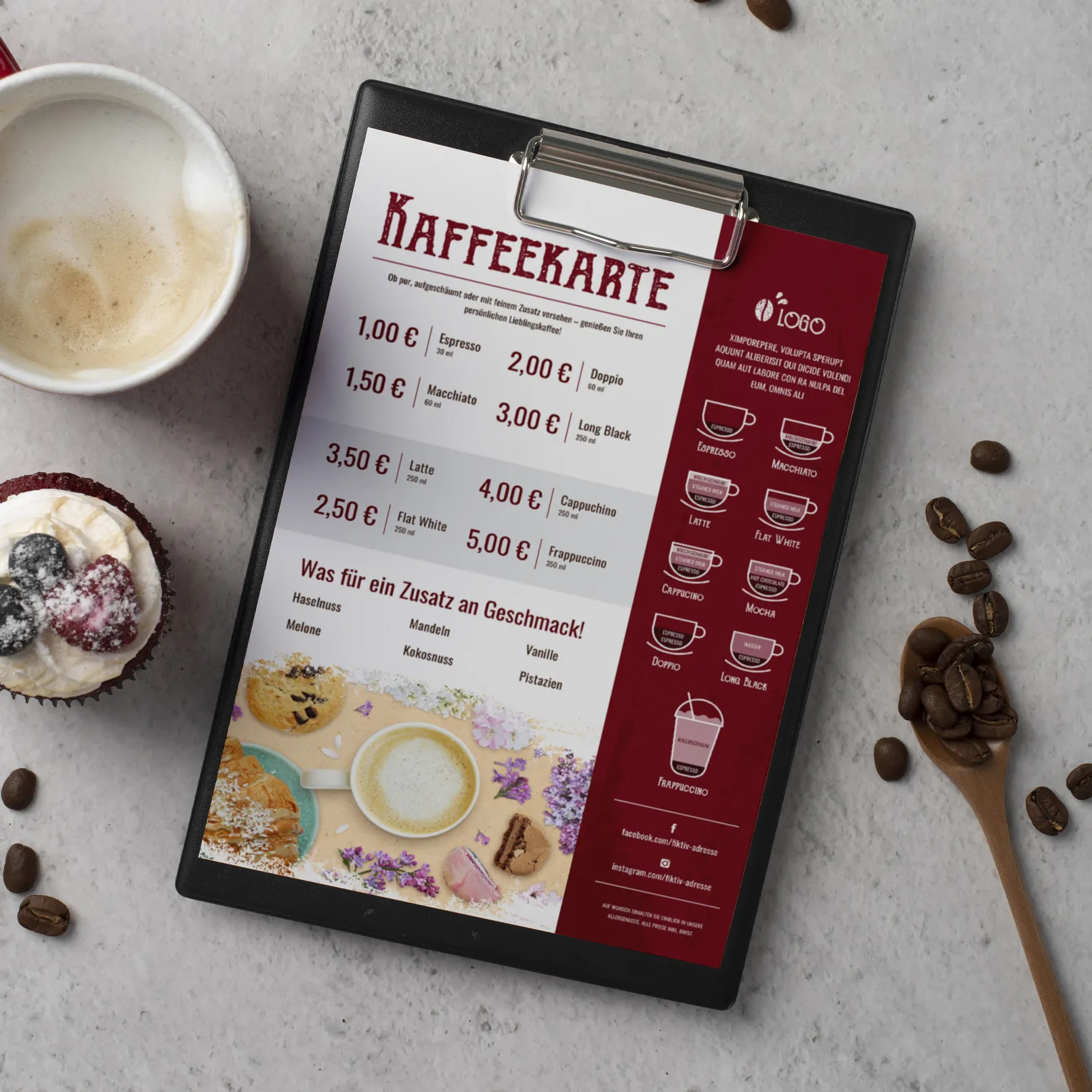
Other important factors related to menu templates
Designing a menu is a complex process that takes into account a variety of factors that influence the design and content. One of these is seasonality and popular trends. When designing a menu, restaurateurs should consider seasonal products and dishes that match the demand of visitors at a particular time of year. In summer, for example, it is better to focus on fresh salads and light dishes, in winter on soups and hot dishes. Also follow popular culinary trends such as veganism, healthy eating or exotic dishes that can attract new customers and satisfy the needs for variety of your existing customers.
Managers of snack bars, pizzerias and restaurants should consider the needs of different customer groups when designing their menus. These include children, vegetarians, vegans, people with special diets or allergies to certain foods. The menu should include a variety of dishes that meet the needs of each customer group so that they have a choice and feel comfortable in the restaurant.
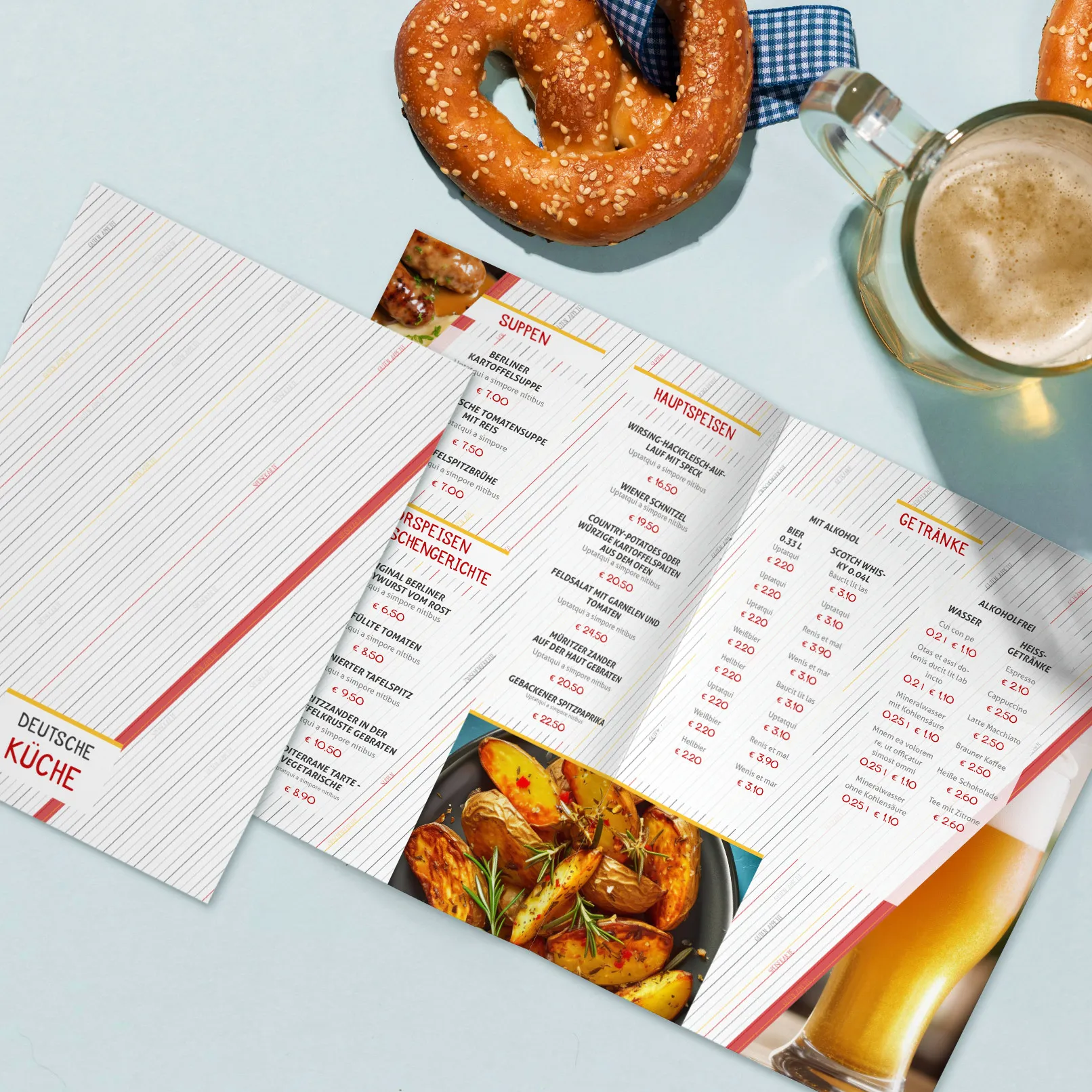
Menu templates on our TutKit.com portal
If you've always dreamed of a stylish and attractive menu for your restaurant that will catch the attention of customers for a long time, then you should check out the ready-made menu templates on the TutKit.com portal.
We offer unique templates developed by the well-known design agency 4eck Media. We have a wide selection of different menu cards for bistros, pizzerias, restaurants or cafés, where each template stands out for its originality and elegance. They can be easily customized to your own needs, and full compatibility with programs such as Affinity Publisher, InDesign and Word allows you to do so even without professional design knowledge and skills.
Don't hesitate. Take your business to the next level with high-quality and stylish menu designs from TutKit.com!

